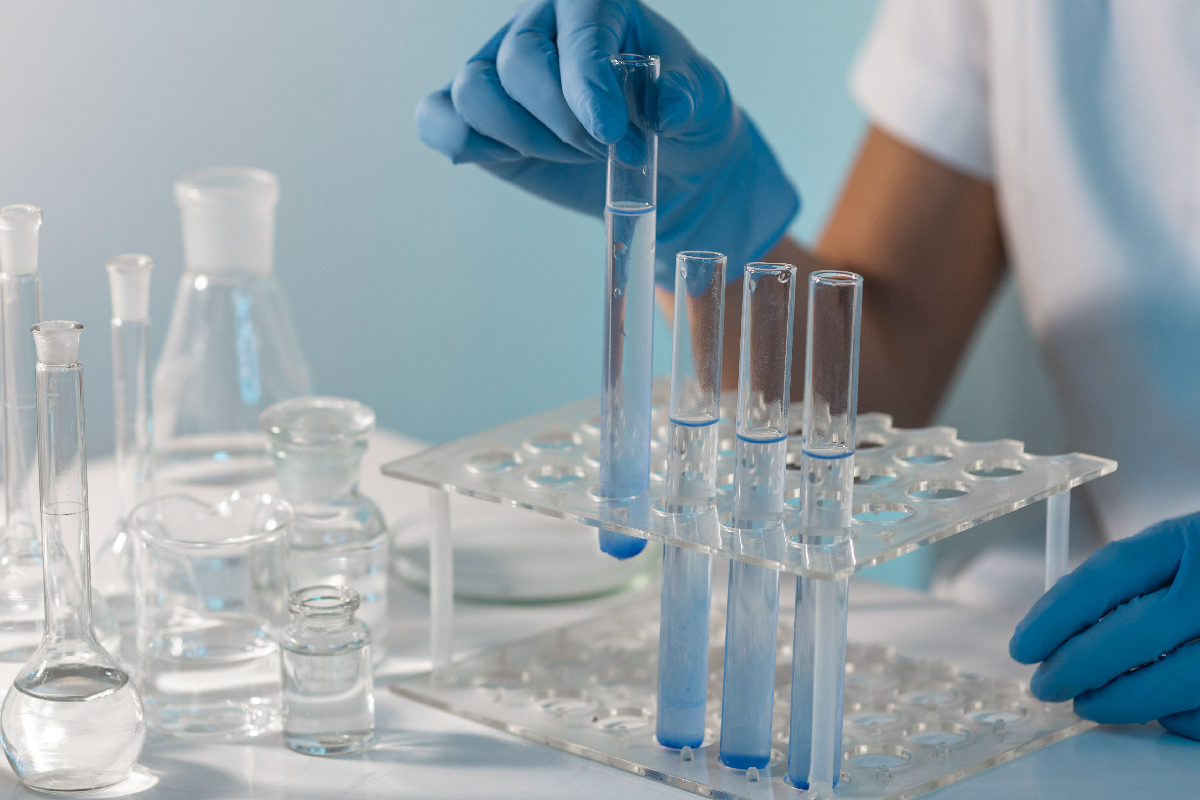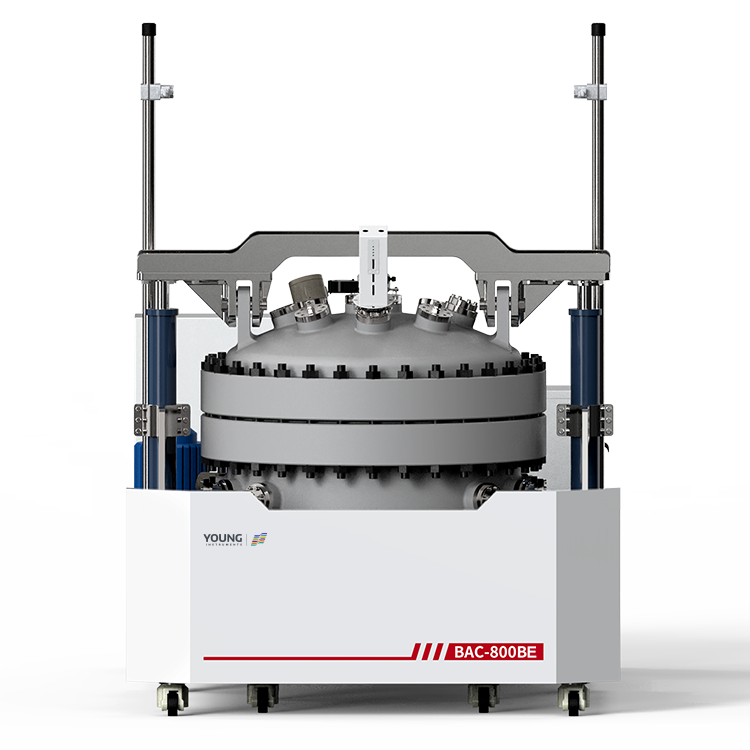Accelerating Rate Calorimeter Used for Runaway Reaction Testing
Chemical reactions obey the principles of mass and energy conservation. In Runaway Reaction Testing, when heat transfer surpasses the reaction’s own heat release rate, temperature and pressure remain manageable. Yet, if external factors or alterations in the reaction reduce cooling below heat generation, heat accumulates. The Accelerating Rate Calorimeter is essential for testing runaway reactions in chemical processes. This elevates system temperature, hastens reaction pace, intensifies heat release, inducing uncontrollable reactions culminating in thermal runaway.
Causes of Thermal Runaway in Chemical Reactions
Chemical Runaway Reaction Testing risk thermal runaway when certain factors disrupt thermal equilibrium. Analyzing the potential causes from two perspectives is crucial: factors affecting the heat release rate (qrx) and factors influencing the heat transfer rate (qex).
Factors Affecting Heat Release Rate
Various parameters can influence the heat release rate in Runaway Reaction Testing:
- Reagent Concentration: The concentration of reactants can significantly impact the rate at which heat is generated.
- Feeding Rate and Catalyst Type/Dosage: How quickly reactants are added and the type and amount of catalyst used can accelerate the reaction, impacting the heat released.
- Pressure Effects: Changes in system pressure can affect reaction kinetics and thermal behavior.
- Material Viscosity and Heat Distribution: The viscosity of the materials and how heat is distributed within the system can influence the reaction’s heat dynamics.
- Stirring Effects: The efficiency of stirring can affect how uniformly heat is distributed within the reactor.
- Heating Failures: Any malfunctions in the heating system can lead to uncontrolled temperature increases.
- Control of Side Reactions: Managing side reactions is crucial as they produce heat and contribute to runaway conditions.
Factors Affecting Heat Transfer Rate
The rate at which heat is removed or transferred from the system can be influenced by several mechanical and operational issues:
- Utility Failures: Failures in common utilities such as valves, jackets, pumps, etc., can reduce the system’s ability to remove heat.
- Scaling on Reactor Surfaces: Scaling on the reactor’s inner walls or the cooling pipes’ outer walls can significantly reduce heat transfer efficiency.
- Cooling System Failures: Malfunctions in the cooling system can prevent adequate heat removal, leading to temperature spikes.
- Decreased Heat Exchange Surface Area in Scale-Up Processes: During the scale-up process, the heat exchange surface area per unit volume of material may decrease, impacting the system’s ability to manage heat effectively.
How to Prevent Thermal Runaway — Introduction of Accelerating Rate Calorimeter TAC-500AE
Product Overviews
The TAC-500AE Accelerating Rate Calorimeter is an advanced instrument tailored for diverse applications in chemical process development, thermal hazard assessment, combustion accident investigation, and thermodynamics research. Widely utilized across industries such as fine chemicals, pharmaceuticals, energetic materials, organic chemistry, polymers, and plastics, this tool offers essential insights into material thermal properties, crucial for mitigating risks like thermal runaway.
Versatile Operational Modes and Integrated Software
Equipped with Heating-Waiting-Search (HWS), isothermal, and constant rate scanning modes, the TAC-500AE adapts seamlessly to various experimental requirements. Its professional data analysis software automates the computation of key parameters including heat release onset temperature, adiabatic temperature rise, activation energy, and pre-exponential factor. Integrated with safety guidelines from emergency management departments, this software provides a comprehensive assessment of process hazards in fine chemical reactions.
Enhanced Safety Features and User-Centric Design
Designed with safety as a priority, the TAC-500AE features status indicators and alarms for monitoring overpressure and overtemperature conditions. Its automatic furnace lid lifting function enhances operational safety and convenience. The calorimeter’s industrial design combines simplicity with a user-friendly interface, facilitating ease of learning and operation.
Detailed Technical Specifications and Operational Environment
Operating efficiently within environmental conditions of 5°C to 40°C and up to 85% relative humidity, the TAC-500AE offers a temperature range spanning from room temperature to 500°C, with an impressive resolution of 0.001°. It detects pressures ranging from 0 to 20,000 kPa with a resolution of 1 kPa. The instrument accommodates 8 mL sample volumes and supports test-cell materials such as stainless steel, titanium alloy, and optional Hastelloy. Connectivity options include USB or RJ45 interfaces, while power requirements are met with AC220V/50Hz supply. Its dimensions of 620mm x 470mm x 670mm and weight of approximately 78kg ensure robust performance in accurately assessing thermal hazards and safeguarding against thermal runaway risks.

Applications of the Accelerating Rate Calorimeter TAC-500AE
The TAC-500AE Accelerating Rate Calorimeter plays a crucial role across several fields by enabling detailed studies of material thermal characteristics. Here’s how it serves various industrial needs through its diverse applications.
Determination of Thermodynamic Parameters
Many risk assessment methods used to identify hazardous situations, such as HAZOP, FMEA, and fault tree analysis, rely on a deep understanding of the thermochemical properties of substances. Through thermodynamic analysis of ARC test results, various thermodynamic parameters of exothermic reactions can be determined. For instance, information such as the onset temperature and adiabatic temperature rise of an exothermic reaction can be obtained from the temperature rise rate-temperature curve.
Self-Accelerating Decomposition Temperature (SADT)
Reactive chemicals in manufacturing, transportation, and storage processes release heat through reactions. If this heat is not dissipated in time, it can lead to self-heating and potentially an explosion. Currently, the self-heating decomposition temperature (SADT) is internationally recognized as a key parameter for assessing the thermal hazard of materials.
Process Safety and Development
Improving furnace designs based on the instability characteristics of materials, changing synthetic routes or processes, implementing comprehensive monitoring of critical reaction steps, and ensuring the reliability of safety systems are core aspects of ARC’s design and development. For example, consider the distillation purification of styrene replacement. Under typical factory vacuum conditions, distillation requires temperatures around 160°C. ARC experiments detected heat release beginning at 150°C, with rapid heat release and gas production making normal distillation impossible. After carefully studying the maximum temperature rise rate and curve, molecular distillation equipment was used under low pressure (0.05 Torr) to purify the substance at temperatures above 140°C.
Investigation of Accident Causes
Common exothermic reactions in chemical industry production, such as polymerization, nitrification, sulfonation, and hydrolysis, are frequently involved in accidents. ARC testing plays a unique role in investigating the causes of these incidents. For instance, in an investigation of a rubber industry accident, both DSC and ARC were used to study allyl chloride. The DSC test showed that the material began to release heat above 240°C. The ARC results showed that the material began to release heat between 85°C and 110°C. This shows that ARC is more sensitive and can better reflect the actual situation that led to the accident.
Summary Runaway Reaction Testing
The Accelerating Rate Calorimeter is essential for evaluating the risk of runaway reactions in chemical processes. It accurately identifies critical parameters like self-accelerating decomposition temperatures and thermodynamic properties, crucial for refining safety protocols in chemical manufacturing. Its capability to detect conditions potentially leading to thermal runaway enables proactive hazard management, ensuring the safety of industrial operations and personnel. This tool is indispensable for upholding stringent safety standards and preventing severe chemical accidents.




































